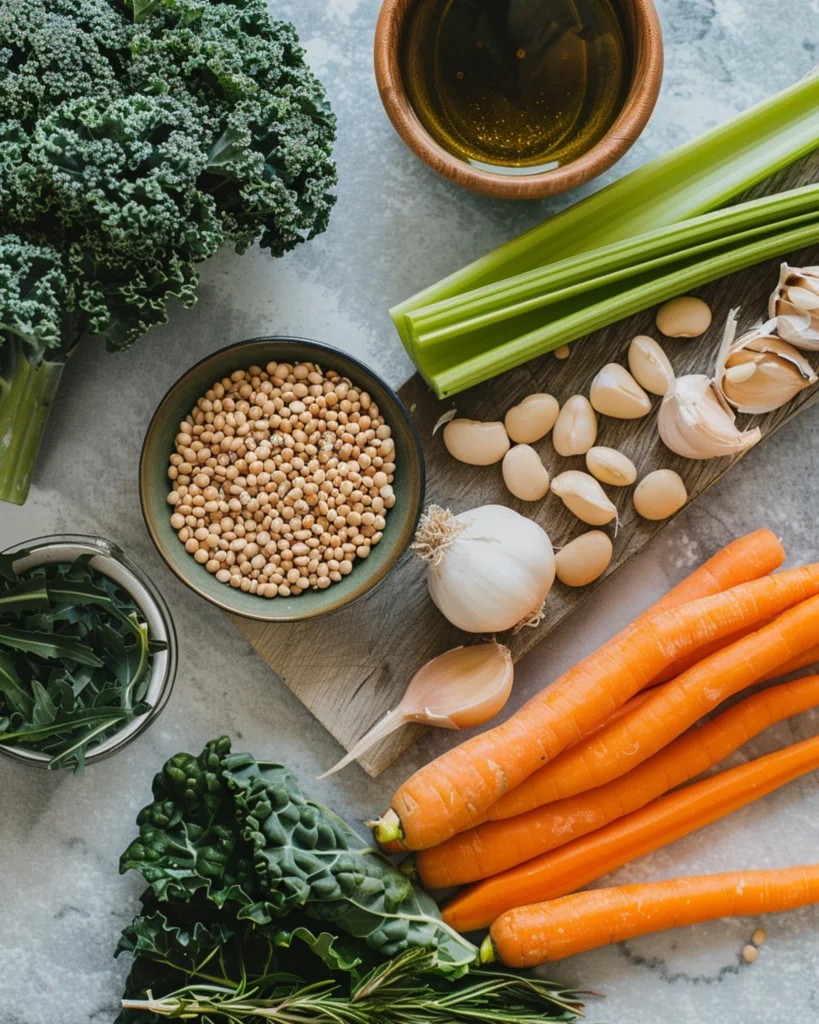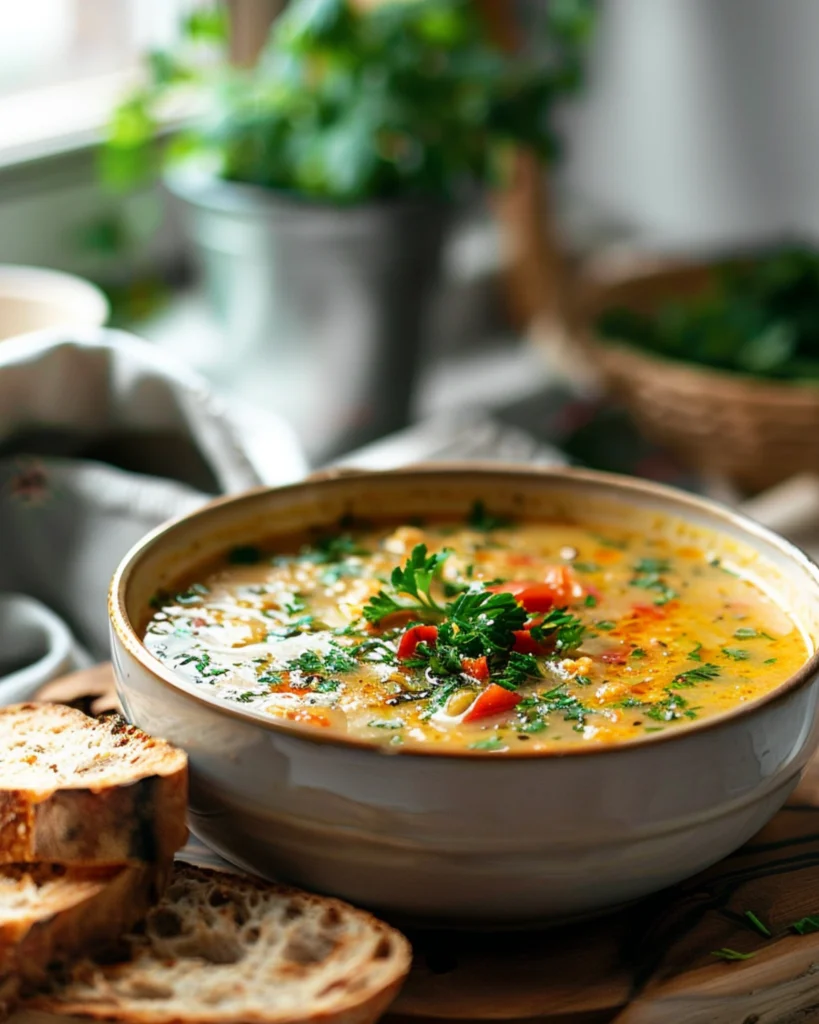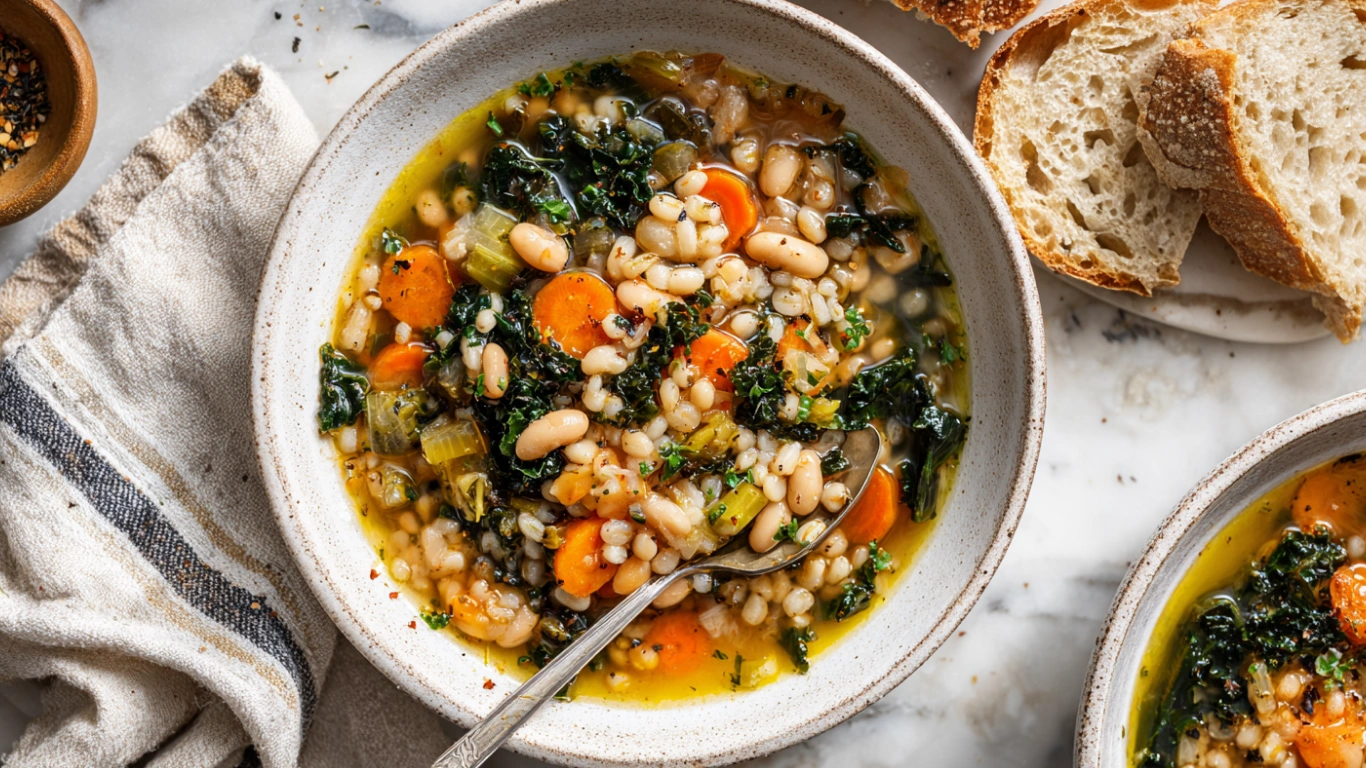Sardinian longevity soup is more than just a comforting meal, it’s a dish tied to the remarkable health and long life of the people of Sardinia, one of the world’s Blue Zones. These regions are known for having the highest concentration of centenarians, and food plays a central role in their well-being.
At the heart of their diet is a humble soup made from beans, vegetables, herbs, and whole grains. This recipe isn’t just about nourishment—it reflects centuries of tradition and balance. In this article, we’ll explore its story, ingredients, variations, and the health benefits that make it legendary.
The Story Behind Sardinian Longevity Soup
Sardinia and the Blue Zone Connection
Sardinia, an island off the coast of Italy, has become famous as one of the “Blue Zones,” regions around the globe where people regularly live to 100 and beyond. Researchers studying Sardinia’s extraordinary longevity found that diet plays a critical role, and one dish consistently appears at the heart of family meals: Sardinian longevity soup. This isn’t just another recipe; it’s a reflection of the island’s lifestyle and values. The soup is based on simple, local ingredients—mainly beans, seasonal vegetables, herbs, and barley, that together create a nutrient-dense meal rich in fiber, protein, and antioxidants.
According to National Geographic’s Blue Zones research, Sardinia is one of the world’s regions where people consistently live longer, thanks in part to their traditional diet.
Families often gather around big bowls of this soup, sharing not just food but conversation and connection. That sense of community is another essential part of longevity. In Sardinia, meals aren’t rushed; they’re shared with family and friends, fostering bonds that support emotional well-being. The soup, therefore, represents much more than calories—it embodies balance, tradition, and togetherness.
This same sense of comfort and nourishment is found in hearty dishes like Greek chicken bowls, which also combine balance and flavor in a single meal.
Why Soup Is Central to Longevity Traditions
Soup has long been a staple of diets worldwide, but in Sardinia, it carries particular weight. For generations, soups like this one provided a way to stretch ingredients, feed large families, and ensure that everyone had access to nourishing food. The slow cooking process allows flavors to develop and nutrients to stay intact, while the use of beans and grains offers sustained energy. Unlike rich, heavy meals, this soup is light yet satisfying, making it easy to eat regularly. That’s one reason Sardinian longevity soup has endured as both a cultural treasure and a symbol of health.
How to Make Sardinian Longevity Soup
Core Ingredients for Longevity
The beauty of Sardinian longevity soup lies in its simplicity. It doesn’t rely on exotic ingredients but instead uses what grows naturally in Sardinia’s hills and gardens. At its core, the soup always features beans, whole grains, vegetables, and herbs. Cannellini beans, fava beans, and chickpeas are especially common, offering protein and fiber. Barley is traditionally used as the grain, though farro or brown rice can also be substituted.
A typical ingredient list includes:
- 1 cup cannellini or fava beans (soaked overnight if dried)
- ½ cup barley or farro
- 2 carrots, chopped
- 2 celery stalks, chopped
- 1 onion, diced
- 3 cloves garlic, minced
- 1 cup chopped kale or cabbage
- 2 tablespoons olive oil
- Fresh herbs like rosemary and parsley
- Salt and black pepper to taste
These ingredients are humble, but when combined, they create a flavorful, nutrient-rich dish that has stood the test of time.
Step by Step Cooking Tips
- In a large pot, heat olive oil and sauté onion, carrot, celery, and garlic until softened.
- Add beans and barley, then cover with six cups of water or vegetable broth.
- Stir in rosemary, bring to a boil, then reduce to a simmer.
- Cook for 45–60 minutes, until beans and barley are tender.
- Add kale or cabbage in the last 10 minutes of cooking.
- Adjust seasoning with salt, pepper, and fresh parsley before serving.
This slow, gentle cooking process brings out deep, comforting flavors while preserving nutrients. Served with a drizzle of extra virgin olive oil and crusty whole grain bread, Sardinian longevity soup isn’t just filling—it’s deeply satisfying. Simple, nourishing, and built on tradition, it’s a dish that embodies health with every spoonful.
This balance of flavors and timing is similar to how recipes like better than takeout fried rice work, where simple techniques elevate everyday ingredients.

Variations and Family Traditions
What Beans Do Sardinians Eat?
Beans are the heart of Sardinian longevity soup, and each family has their preferred varieties. Cannellini beans are a favorite, offering a creamy texture and mild flavor that absorbs herbs beautifully. Fava beans are another staple, celebrated for their nutty taste and role in traditional Sardinian cooking. Chickpeas also appear often, giving the soup both richness and substance. By mixing these beans together, Sardinians create a dish that’s nutritionally complete, high in plant based protein, and deeply satisfying.
Beyond beans, Sardinians sometimes add lentils or borlotti beans for variety, depending on what’s available in the season. The emphasis is always on balance: protein, rich legumes paired with whole grains like barley, then rounded out with seasonal vegetables. This approach ensures that the soup is not just filling but nourishing in every sense. The combination of legumes and grains is one of the oldest dietary traditions in the Mediterranean, and it remains a cornerstone of Sardinian longevity.
What Is the World’s Oldest Family Soup?
Sardinian longevity soup has deep roots, but it connects to a broader global tradition. Around the world, many families maintain soups that have been simmering for generations, sometimes referred to as “perpetual stews” or “family soups.” These are pots kept on the stove, continuously replenished with new ingredients, symbolizing nourishment that never ends. While Sardinia may not claim the single oldest family soup in the world, their longevity recipe is a living link to that same tradition of continuity.
In Sardinia, recipes are passed down through generations, often taught by grandmothers to children. The longevity soup, simmered slowly and shared in community, carries family history in every bowl. It’s not just about eating—it’s about connection, culture, and the wisdom of generations who understood that food and health are inseparable.

Nutrition & Longevity Benefits
What Soup Do the Longest Living People Eat?
In Sardinia, the longest living people regularly eat bean-based soups like Sardinian longevity soup. Unlike heavy meat dishes, these soups are built on legumes, vegetables, and whole grains, which together form a nutrient-dense meal. Researchers studying the Blue Zones found that Sardinian families enjoy this type of soup multiple times a week, sometimes daily, as part of a lifestyle rooted in simplicity.
The high fiber content from beans and barley supports digestion and heart health, while antioxidants from vegetables like carrots and kale reduce inflammation. Olive oil adds healthy fats, and herbs like rosemary bring both flavor and medicinal value. Together, these ingredients create a balanced, low glycemic meal that fuels the body steadily, supporting longcterm wellness. For centenarians in Sardinia, the soup is not just food, it’s a foundation for healthy aging.
What Soup Makes People Live Longer?
While no single food guarantees longevity, soups like Sardinian longevity soup provide a strong example of how diet shapes health outcomes. Legume-based soups have been linked to lower risks of cardiovascular disease, diabetes, and obesity. Because they are nutrient-dense yet low in calories, they encourage a healthy weight and provide essential vitamins and minerals without excess fat or sugar.
Other cultures in Blue Zones also rely on similar soups: minestrone in Italy, lentil soups in Ikaria, and vegetable-rich broths in Okinawa. The common theme is clear—meals centered on beans, grains, and vegetables promote long life. Sardinian longevity soup is one of the most famous because of its connection to the island’s remarkable number of centenarians. By enjoying this soup regularly, you’re not just tasting tradition—you’re tapping into a proven pattern of eating that has helped the world’s oldest people thrive.


Sardinian Longevity Soup
Ingredients
Equipment
Method
- In a large pot, heat olive oil and sauté onion, carrot, celery, and garlic until softened.
- Add beans and barley, then cover with six cups of water or vegetable broth.
- Stir in rosemary, bring to a boil, then reduce to a simmer.
- Cook for 45–60 minutes, until beans and barley are tender.
- Add kale or cabbage in the last 10 minutes of cooking.
- Adjust seasoning with salt, pepper, and fresh parsley before serving.
Nutrition
Notes
From your stove to our hearts
share your delicious take!FAQs
What soup do the longest living people eat?
The longest living people in Sardinia often enjoy Sardinian longevity soup, a simple but powerful recipe made from beans, vegetables, barley, and herbs. It’s eaten regularly because it’s both nourishing and easy to prepare. Blue Zone research shows that bean-based soups like this are central to healthy aging.
What soup makes people live longer?
No single soup can guarantee longevity, but bean and vegetable soups are consistently linked to better health outcomes. Soups made with legumes, whole grains, and greens—like Sardinian longevity soup—support digestion, provide plant-based protein, and deliver antioxidants. Eating these regularly as part of a balanced diet can contribute to a longer, healthier life.
What is the world’s oldest family soup?
Across the world, families maintain recipes called “perpetual soups” or “family stews,” pots that are kept simmering for years by continuously adding ingredients. Sardinian longevity soup isn’t technically the oldest family soup, but it represents a similar tradition passed down through generations and tied to culture, health, and family bonds.
What beans do Sardinians eat?
Sardinians commonly eat cannellini beans, fava beans, chickpeas, and sometimes lentils or borlotti beans. These legumes are central to the soup and provide plant-based protein, fiber, and minerals. The combination of beans with barley or farro creates a complete protein, giving Sardinian longevity soup its powerful nutritional profile
Conclusion
Sardinian longevity soup isn’t just a recipe, it’s a reflection of a lifestyle that values balance, simplicity, and community. With beans, vegetables, herbs, and grains, it brings together nutrient-rich ingredients that support health and longevity.
For the families of Sardinia, it’s a dish that has been shared for centuries, sustaining generations who live longer than most. By making it at home, you’re not just cooking a soup, you’re connecting to a tradition proven to nourish both body and spirit. If you’ve been searching for a wholesome, timeless recipe, Sardinian longevity soup is one worth embracing.
